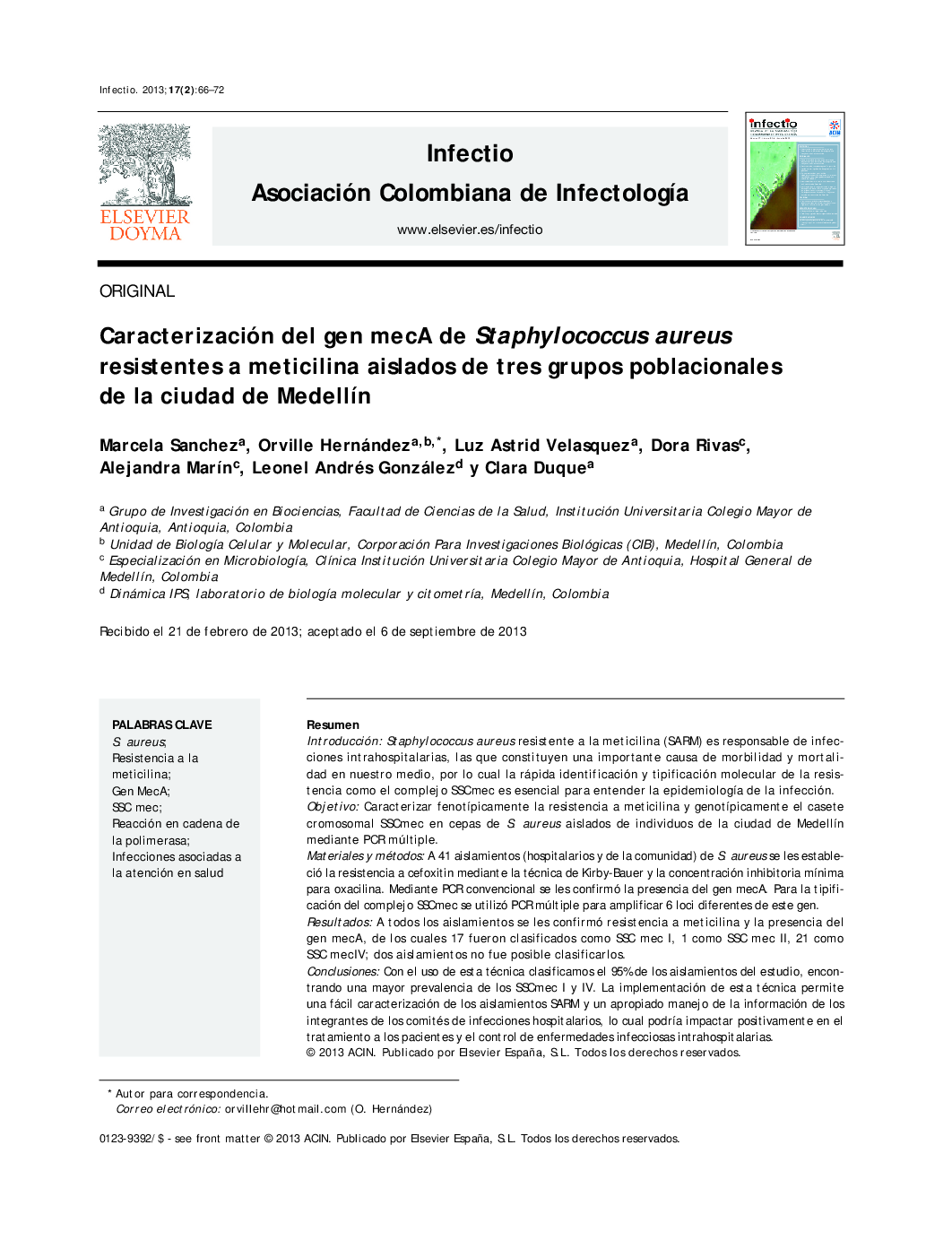| Article ID | Journal | Published Year | Pages | File Type |
|---|---|---|---|---|
| 3403720 | Infectio | 2013 | 7 Pages |
ResumenIntroducciónStaphylococcus aureus resistente a la meticilina (SARM) es responsable de infecciones intrahospitalarias, las que constituyen una importante causa de morbilidad y mortalidad en nuestro medio, por lo cual la rápida identificación y tipificación molecular de la resistencia como el complejo SSCmec es esencial para entender la epidemiología de la infección.ObjetivoCaracterizar fenotípicamente la resistencia a meticilina y genotípicamente el casete cromosomal SSCmec en cepas de S. aureus aislados de individuos de la ciudad de Medellín mediante PCR múltiple.Materiales y métodosA 41 aislamientos (hospitalarios y de la comunidad) de S. aureus se les estableció la resistencia a cefoxitin mediante la técnica de Kirby-Bauer y la concentración inhibitoria mínima para oxacilina. Mediante PCR convencional se les confirmó la presencia del gen mecA. Para la tipificación del complejo SSCmec se utilizó PCR múltiple para amplificar 6 loci diferentes de este gen.ResultadosA todos los aislamientos se les confirmó resistencia a meticilina y la presencia del gen mecA, de los cuales 17 fueron clasificados como SSC mec I, 1 como SSC mec II, 21 como SSC mecIV; dos aislamientos no fue posible clasificarlos.ConclusionesCon el uso de esta técnica clasificamos el 95% de los aislamientos del estudio, encontrando una mayor prevalencia de los SSCmec I y IV. La implementación de esta técnica permite una fácil caracterización de los aislamientos SARM y un apropiado manejo de la información de los integrantes de los comités de infecciones hospitalarios, lo cual podría impactar positivamente en el tratamiento a los pacientes y el control de enfermedades infecciosas intrahospitalarias.
IntroductionMethicillin-resistant Staphylococcus aureus (MRSA) is involved in nosocomial infections, representing an important cause of morbidity and mortality. The rapid identification and molecular classification of resistance, such as the SSCmec complex, is essential to understanding the epidemiology of infection.ObjectiveTo phenotypically characterize methicillin resistance and to genotype the SSCmec complex in S. aureus isolates collected from a cohort of patients from Medellín, Colombia.Materials and MethodsCefoxtin resistance was evaluated in 41 S. aureus isolates, using the Kirby-Bauer method and determining the minimal bactericidal concentration of oxacillin. To confirm the presence of the mecA gene, conventional PCR was performed. The classification of the SSCmec complex was carried out by multiple PCR, amplifying 6 different loci in this gene.ResultsMethicillin resistance and the presence of the mecA gene were confirmed in all isolates. A total of 17 were classified as SSCmec I, one as SSCmec II, and 21 SSCmec IV (only two isolates were not classified).ConclusionsUsing this method, it was possible to classify 95% of the studied isolates, with a higher prevalence of SSCmec I and IV. The implementation of this technique allows the characterization of MRSA isolates and an appropriate management of the information by the members of the Hospital Infection Committee. Altogether, this method may have a positive impact on the treatment of patients with MRSA infections.
